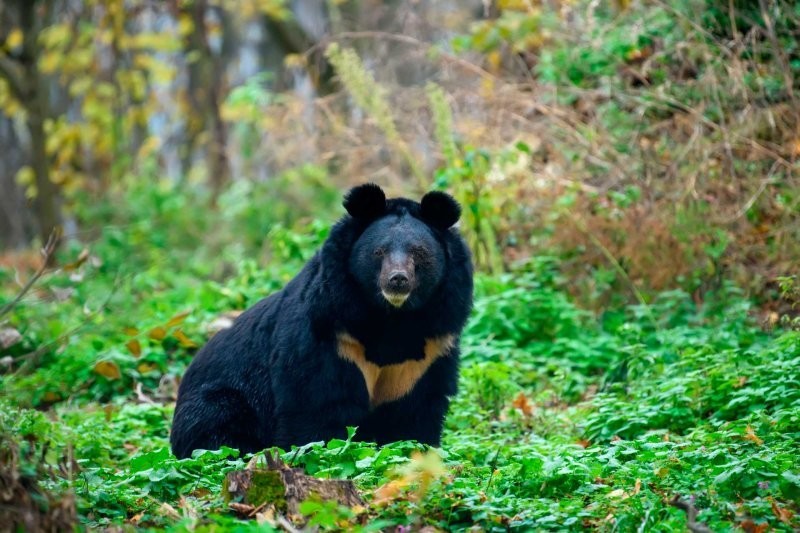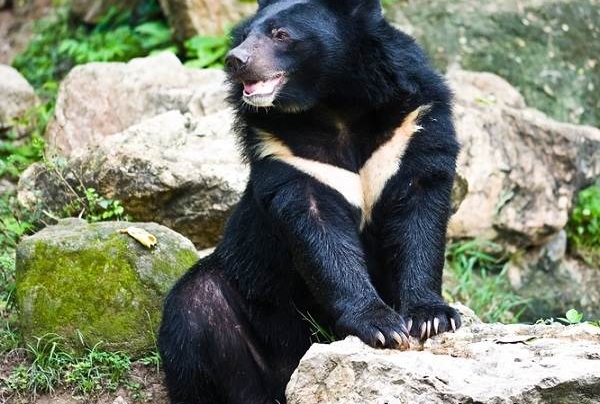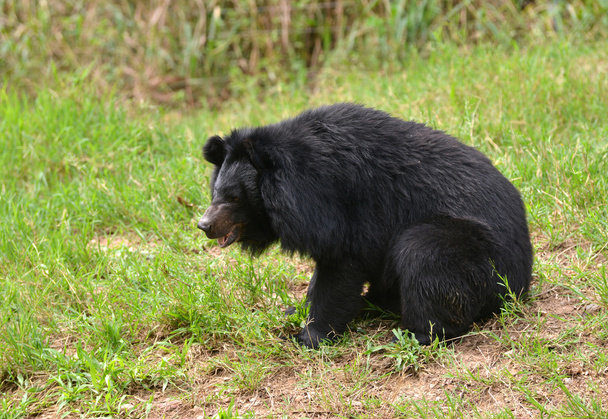Himalayan bear (Ursus thibetanus), also known as asian black bear, is a medium-sized member of the bear family. It is easily recognized by thick black hair and white V-shaped patch on the chest, which is why it is also called "Moon Bear".
This species of bear is adapted to life in mountainous and wooded regions of Asia. Thanks to flexibility in nutrition, ability to climb trees well and agility it survives even in hard-to-reach places.

Classification
🔬 Scientific classification:
✔ The Kingdom: Animals (Animalia)
✔ Type: Chordal (Chordata)
✔ Class: Mammals (Mammalia)
✔ Row: Predatory animals (Carnivora)
✔ Family: Bearish (Ursidae)
✔ Gender: Bears (Ursus)
✔ View: Himalayan bear (Ursus thibetanus)
🔍 Subspecies:
• Ursus thibetanus thibetanus - the main subspecies found in the Himalayas
• Ursus thibetanus japonicus - japanese black bear
• Ursus thibetanus ussuricus - Ussuri black Bear
• Ursus thibetanus laniger - tibetan black bear
• Ursus thibetanus formosanus - taiwanese black bear
Appearance
📏 Adult sizes:
• Body length: 120-190 cm
• Shoulder height: 60-90 cm
• Weight:
* Males: 90-200 kg
* Females: 65-140 kg
🎨 Features of appearance:
* Thick black coat
* White V-shaped spot on the chest
* Large head with rounded ears
* Powerful paws with long claws
📌 Interesting!
Himalayan bears have relatively long paws and clawsthan brown bears, which helps them climb trees.

Lifestyle and behavior
🐾 Main Features:
• Active at dusk and at night
• Great mountain climber - spends a lot of time in the trees
• It can go into hibernation, but not always – it depends on your region of residence
📌 Interesting!
The Himalayan bear can stand up on its hind legs to inspect the territory and looks quite "human-like".

Living environment
🌍 Habitat range:
• Mountainous areas of South and East Asia
* Main countries: Nepal, Bhutan, China, India, Pakistan, Japan, Korea, Russia, Taiwan, Vietnam
🏞 Typical habitats:
* Mountain forests
* Bamboo thickets
* Alpine meadows
Food
🥗 Basic diet:
* Fruits, berries, nuts
* Insects, small animals
* Roots, herbs
* Honey
🔍 Foraging methods:
* Destroys anthills and termite mounds
* Climbs trees in search of fruit
* Uses paws to dig out roots
📌 Interesting!
His love of honey makes him look like a Malay bear.
Reproduction
👶 Breeding season:
* Mating season: May-June
* Pregnancy: 7-8 months
🐻 Newborns:
* Born 1-3 bear cubs
* Birth weight: 300-400 g
* Period of dependence on the mother: up to 2 years old
📌 Interesting!
The female may delay embryo implantation, waiting for favorable conditions.
Human interaction
⚠ Threats:
* Deforestation
• Poaching
* Conflicts with farmers
🏛 View protection:
* Included in the IUCN Red List
* Protected in national parks
📌 Interesting!
Some subspecies of the Himalayan bear are threatened with extinction.

Interesting facts
📌 Facts about the Himalayan bear:
1️⃣ Excellent tree climber
2️⃣ It has strong jaws - can crack bamboo
3️⃣ Leads a nocturnal lifestyle
4️⃣ It can stand up on its hind legs, resembling a human
5️⃣ Loves honey just like a Malay bear
Conclusion
Himalayan bear (Ursus thibetanus) – Asia's unique predator, adapted to life in mountain forests. Its ability to climb trees, its flexibility in feeding, and its unique appearance make it one of the most interesting members of the bear family.
Despite its strength, this species needs protectionafter all, deforestation and poaching reduce its population.
